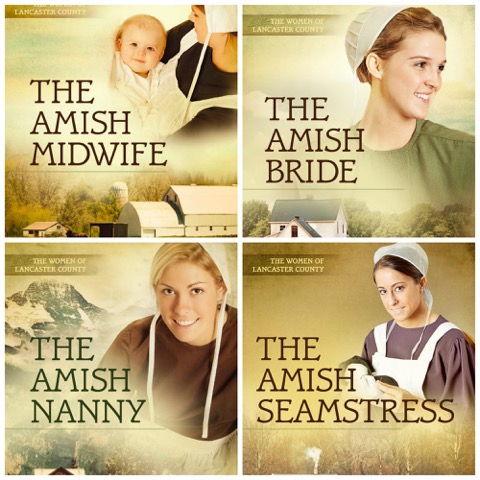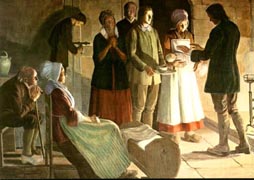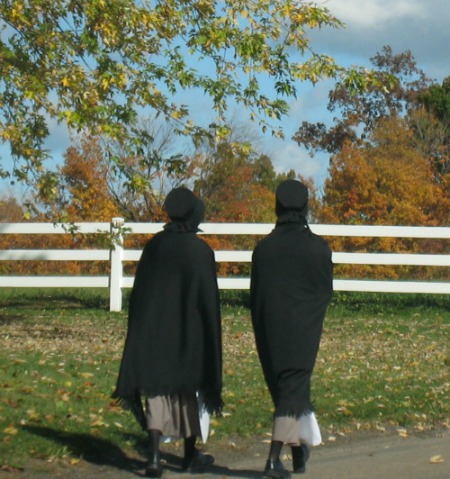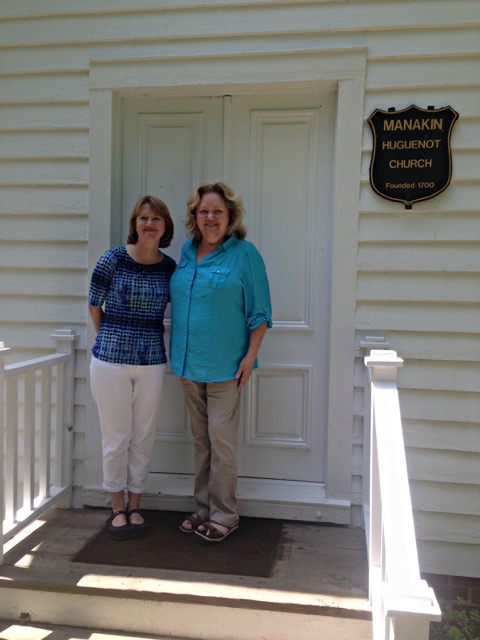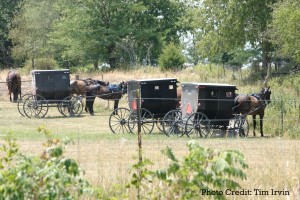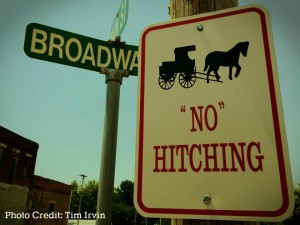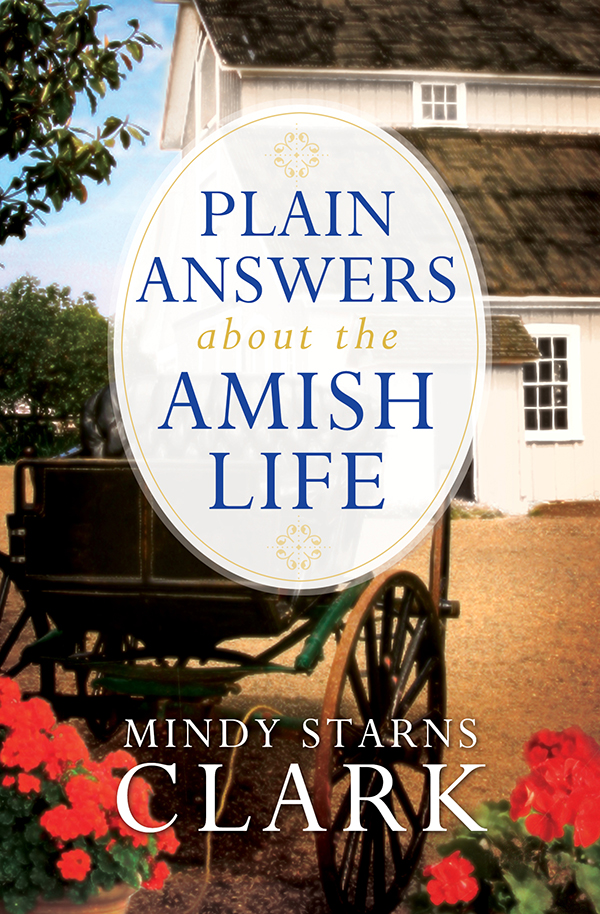Creating Community: The Common Threads in Mindy Starns Clark’s Books (Plus a Giveaway!)
Some writers will pick a single genre and stick with it their entire careers, while others tend to produce a wider variety of works. Looking at my own oeuvre, it’s easy to see I fall into the latter category. Over the past 20 years, I have written plenty of Amish fiction and nonfiction, but I’ve also written mystery novels, dual-timeline novels, and even a how-to book on housekeeping!
That’s a lot of variety, something the creative side of me needs in order to flourish. I love to explore, creatively speaking. In fact, if I’d had to write the same types of stories in the same genre for every single book I’d ever done, I’d have gotten incredibly bored. Like I said, variety.
Or is it?
Upon closer inspection, despite having penned such a wide rage of works, I find that some common themes do tend to resurface across almost all of my fiction, such as:
- characters who are somehow isolated but come to find connection and community through the course of the story
- strong female protagonists who are smart in life but clueless in love
- long-hidden family secrets, unusual settings, unique professions, and more
 Most of these elements are included with intention, but the truth is that common threads can appear across an author’s entire body of work, creating connections that he or she never consciously intended. This is exactly what happened to me with regard to what’s known as “displaced people groups.”
Most of these elements are included with intention, but the truth is that common threads can appear across an author’s entire body of work, creating connections that he or she never consciously intended. This is exactly what happened to me with regard to what’s known as “displaced people groups.”
The United Nations defines this as “the forced movement of people from their locality or environment and occupational activities. It is a form of social change caused by a number of factors, the most common being armed conflict. Natural disasters, famine, development and economic changes may also be a cause of displacement.”
Apparently, there is something about this phenomenon that stirs my creative interest enough to shape entire novels around it—yet it took my husband to point this out to me. It happened a few years ago, when I first told him of a new series that Leslie Gould and I wanted to write, about a family of Huguenots forced to flee from France under the threat of religious persecution.
“Great idea,” he said. “So it’ll be another one of your displaced people group stories.”
“My what?”
“Displaced people group stories.” When he saw the blank look I gave him, he added, “You write about them all the time. Did you not realize that?”
In that moment, it struck me how right he was.
My fascination with this phenomenon started back in 2008 with a standalone mystery I wrote called Whispers of the Bayou. Though that story takes place in the modern day, much of its mystery surrounds the history of the Acadians, who were forcibly removed from their homes in Nova Scotia back in the mid 1700s and scattered to the four winds. A large group of them eventually ended up in southern Louisiana, where they reestablished community and slowly became known as the “Cajuns.”
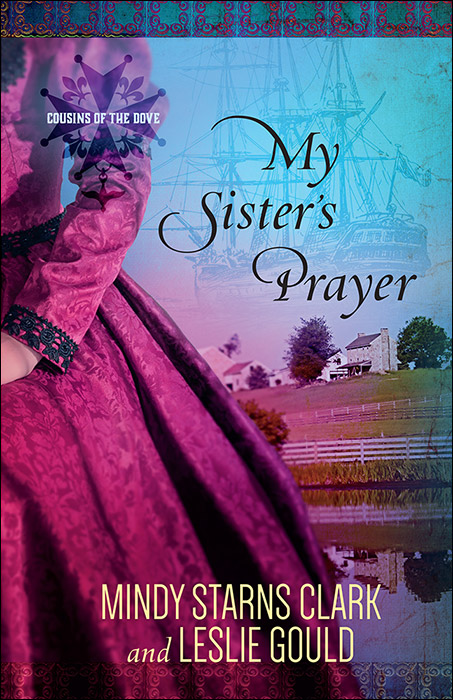 The Amish were also victims of displacement, forced to leave their beloved homelands in Europe and head to America in search of religious freedom. Many of my Amish books have dealt with this very topic, weaving their tragic history in and among their stories.
The Amish were also victims of displacement, forced to leave their beloved homelands in Europe and head to America in search of religious freedom. Many of my Amish books have dealt with this very topic, weaving their tragic history in and among their stories.
Then there were the Huguenots of France, who were protected for a time under a royal decree that allowed them to worship as Protestants rather than adhering to the state religion of Catholicism. But when that freedom was later revoked, the Huguenots were forced to convert to Catholicism or face punishment, imprisonment, or even death. As many as 400,000 Huguenots fled France, relocating to Protestant countries in Europe, South Africa, and North America.
Our first novel in this series, My Brother’s Crown, is set in 1685 and focuses on the Gillet and Talbot families of Lyon, France, who are part of this great diaspora and end up in England. The second book in the series, My Sister’s Prayer, picks up their story with the next generation, as they emigrate from England to the New World. In both books, the characters are forced to leave behind all that they know and start life anew elsewhere.
So why am I drawn to stories like these—tales involving people groups that have been forcibly displaced?
If I had to guess, I’d say it ties back into my most common recurring theme, that of isolation and longing for community. I can imagine no greater isolation than that of those who’ve been sent from their homes and towns and lives and everything they’ve ever known only to resettle somewhere foreign and strange and new.
I can also imagine the incredible sense of connection and community as small clusters of these people groups clung together to establish new homes, new towns, and start over again.
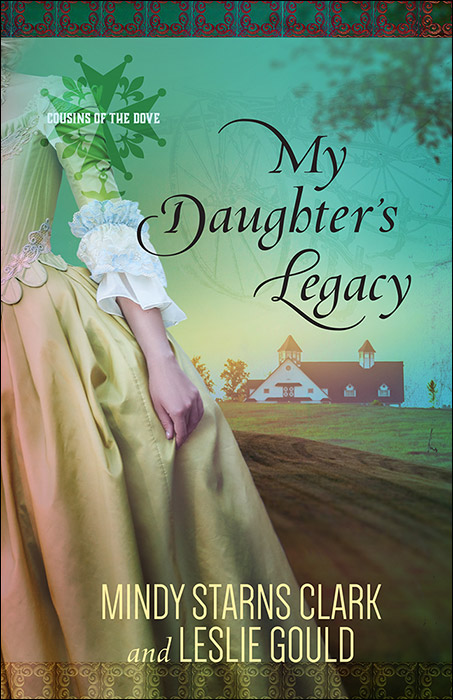 We all have “people groups” to which we belong, from small (“I’m a member of a book club”) to large (“I’m an American”) to everywhere in between (“I’m a Shih Tzu lover,” “I’m a Southerner,” “I’m a Broadway aficionado,” and so on). You have them too. Even the fact that you’re here right now, reading this article, makes you part of a people group. You’re a lover of Amish fiction or, even more specifically, you’re a part of the AmishReader.com family. Participating in this wonderful place, discussing your enjoyment of a specific genre with like-minded people, hearing from familiar authors who share your enthusiasm—these are things that create community.
We all have “people groups” to which we belong, from small (“I’m a member of a book club”) to large (“I’m an American”) to everywhere in between (“I’m a Shih Tzu lover,” “I’m a Southerner,” “I’m a Broadway aficionado,” and so on). You have them too. Even the fact that you’re here right now, reading this article, makes you part of a people group. You’re a lover of Amish fiction or, even more specifically, you’re a part of the AmishReader.com family. Participating in this wonderful place, discussing your enjoyment of a specific genre with like-minded people, hearing from familiar authors who share your enthusiasm—these are things that create community.
And community is something that we all need, whether we have to find it anew after being forcibly removed from our homelands or we simply have to seek it out in the stable, safe environments in which we have always lived. Either way, God designed us to need others, and in seeking community we acknowledge that need. In finding community, we begin to fulfill it—and that’s the stuff that novels are made of.
Or at least my novels, apparently.
Considering the vast number of displaced people groups throughout history still left to explore, I’m sure this is a topic I’ll be revisiting again—though perhaps with a bit more intention next time.
©2016 Mindy Starns Clark
* * *
 Mindy Starns Clark is the bestselling author of more than 20 books, both fiction and nonfiction, with over a million copies sold. Mindy and her husband, John, have two adult children and live in Pennsylvania. Visit her online at www.mindystarnsclark.com.
Mindy Starns Clark is the bestselling author of more than 20 books, both fiction and nonfiction, with over a million copies sold. Mindy and her husband, John, have two adult children and live in Pennsylvania. Visit her online at www.mindystarnsclark.com.
***Want a chance to win one of three copies of My Sister’s Prayer? Enter the giveaway using the form below!
Fine print: This giveaway is open to US residents only. The form will close at midnight PT on October 19, 2016.

